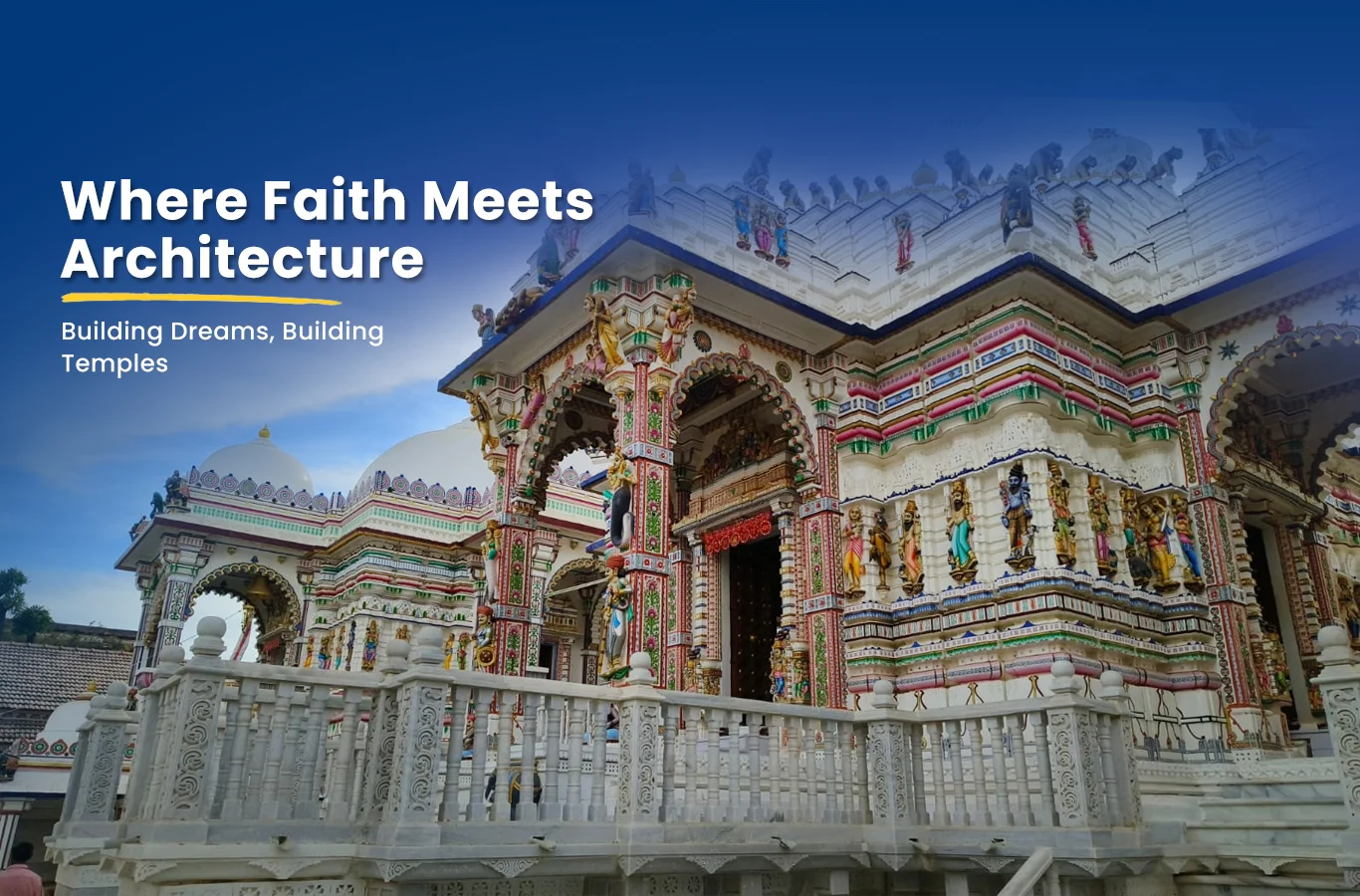India’s ancient temples are not only spiritual havens but also cultural treasures that reflect the country’s rich heritage. However, preserving and restoring these structures is a complex task that requires a deep understanding of traditional architecture, advanced techniques, and careful planning. A Temple Architect in India, particularly specialists like Jain Temple Sompura architects, along with expert Temple Construction Services in Rajasthan, plays a vital role in safeguarding these timeless monuments.
The Importance of Restoring Ancient Temples
Ancient temples hold immense historical, spiritual, and architectural significance. Restoring them is essential for:
- Preserving Heritage: Safeguarding cultural and religious practices.
- Promoting Tourism: Attracting global visitors and boosting local economies.
- Maintaining Religious Sanctity: Ensuring temples continue to serve as places of worship.
Challenges in Restoring Ancient Temples
Restoring ancient temples is fraught with challenges, ranging from environmental factors to limited resources.
1. Structural Degradation Over Time
Centuries of exposure to natural elements lead to significant wear and tear in ancient temples.
Causes of Structural Damage:
- Weathering: Rain, wind, and temperature changes erode stone and weaken structures.
- Seismic Activity: Earthquakes can cause cracks and destabilize temple foundations.
- Biological Growth: Moss, algae, and plant roots accelerate deterioration.
Temple Construction Services in Rajasthan specialize in addressing these issues by using techniques that reinforce the structural integrity while maintaining authenticity.
2. Lack of Skilled Artisans
Restoring intricate carvings and sculptures requires highly skilled artisans, many of whom are becoming scarce.
Challenges:
- Decline in traditional craftsmanship knowledge.
- Difficulty in training artisans to replicate ancient designs.
The Jain Temple Sompura architects are among the few who have preserved these traditional skills, ensuring that restoration work aligns with the original craftsmanship.
3. Material Availability and Compatibility
Using the right materials is critical for authentic restoration. However, finding materials that match the original construction poses challenges.
Key Issues:
- Scarcity of Original Materials: Limited availability of specific types of stone or wood.
- Compatibility Problems: Modern materials may not blend seamlessly with ancient structures.
Rajasthan’s abundant resources, such as marble and sandstone, are vital for restoration projects. Expert Temple Construction Services in Rajasthan ensure material compatibility for long-lasting results.
4. Environmental and Pollution Concerns
Modern environmental factors exacerbate the deterioration of ancient temples.
Key Threats:
- Pollution: Acid rain and air pollutants cause discoloration and erosion.
- Climate Change: Extreme weather conditions accelerate damage.
Advanced techniques like laser cleaning and protective coatings, often implemented by a Temple Architect in India, are used to mitigate these effects.
5. Balancing Modern Techniques with Traditional Methods
Restoration requires a delicate balance between using modern technology and adhering to traditional practices.
Challenges:
- Preserving Authenticity: Ensuring that modern interventions do not alter the temple’s historical value.
- Technological Integration: Incorporating tools like 3D scanning without disrupting traditional methods.
The Jain Temple Sompura architects excel in blending modern and traditional techniques, ensuring the sanctity of Jain temples is preserved.
6. High Restoration Costs
Restoring ancient temples is often an expensive endeavor.
Contributing Factors:
- Cost of sourcing rare materials.
- Hiring skilled artisans and specialists.
- Using advanced technology like 3D scanning and laser tools.
Government support, heritage funds, and contributions from devotees are essential to manage these expenses.
7. Legal and Administrative Hurdles
Restoration projects often face bureaucratic delays and legal challenges.
Issues:
- Securing permissions for restoration work.
- Complying with heritage preservation laws.
- Coordinating between various stakeholders, including government agencies and local communities.
Modern Solutions for Restoring Ancient Temples
While challenges abound, innovations in technology and collaborative efforts are paving the way for effective restoration.
1. 3D Scanning and Modeling
- Captures intricate details of temples for accurate restoration.
- Provides a digital blueprint for structural repairs.
2. Eco-Friendly Restoration Techniques
- Use of sustainable materials to minimize environmental impact.
- Solar-powered lighting and water systems to modernize temple complexes.
3. Digital Documentation
- Creating archives to preserve traditional architectural knowledge.
- Virtual reality (VR) experiences to promote global awareness of temple heritage.
The Role of Jain Temple Sompura Architects in Restoration
The Jain Temple Sompura architects bring centuries-old expertise to the restoration of Jain temples and other heritage sites.
Key Contributions:
- Restoring intricate marble carvings and sculptures.
- Designing structural reinforcements that blend seamlessly with ancient styles.
- Using eco-friendly and sustainable practices in temple restoration.
Their work on temples like the Dilwara Temples and Ranakpur Jain Temple exemplifies their mastery in preserving India’s cultural heritage.
Temple Construction Services in Rajasthan: Guardians of Heritage
Temple Construction Service in Rajasthan play a pivotal role in restoring temples across India. Their extensive experience, access to local materials, and skilled artisans make them ideal for managing restoration projects.
Specialized Services:
- Restoration of weathered sculptures and carvings.
- Reinforcement of temple foundations and domes.
- Application of protective treatments to prevent future damage.
Conclusion
Restoring and preserving ancient temples is a complex but essential task to safeguard India’s cultural and spiritual heritage. From addressing structural degradation to balancing tradition with modern technology, the challenges are significant but surmountable.
With the expertise of a Temple Architect in India, the craftsmanship of Jain Temple Sompura architects, and the efficiency of Temple Construction Services in Rajasthan, these ancient marvels can be preserved for future generations. As modern innovations meet traditional wisdom, these timeless monuments continue to inspire awe and devotion across the globe.

